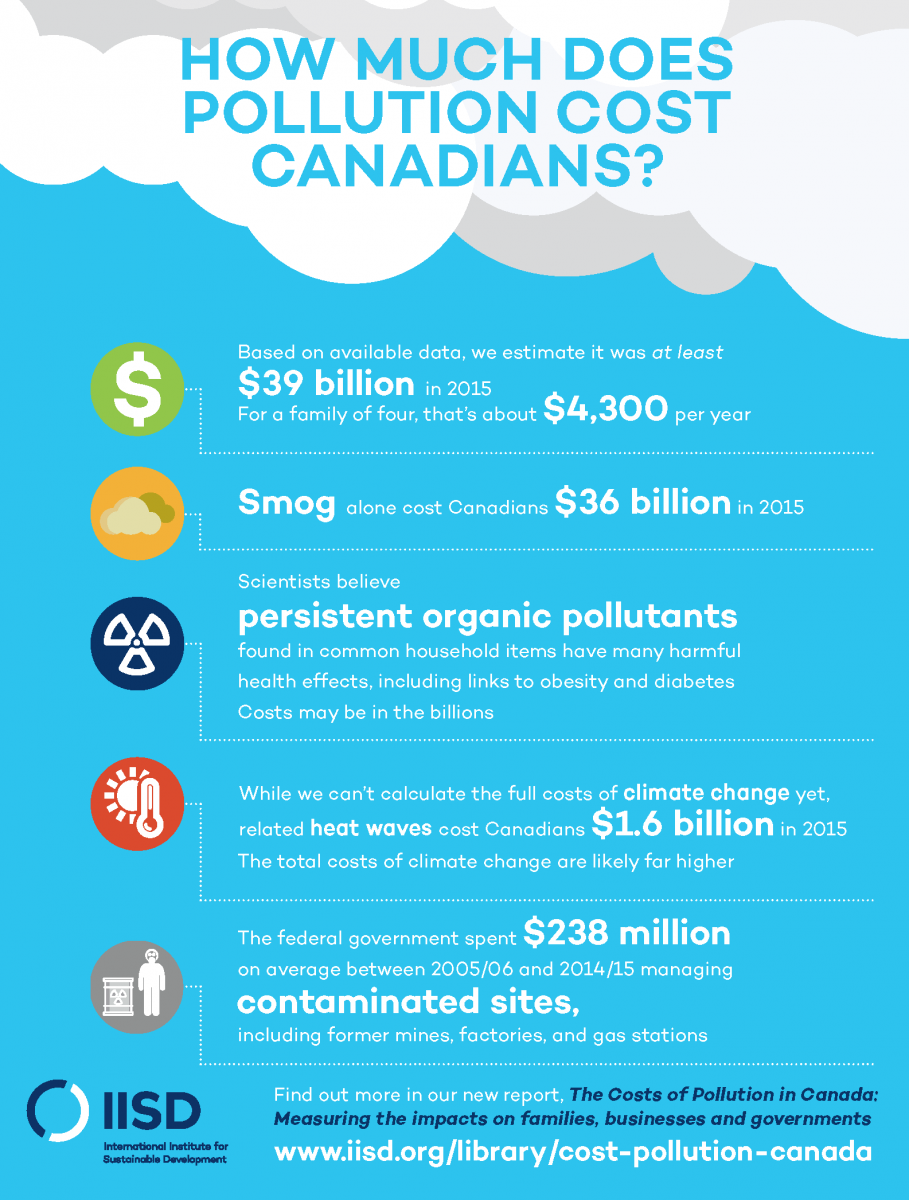
Costs of Pollution in Canada: Measuring the impacts on families, businesses and governments
Pollution costs Canadian families, businesses and governments a startling amount every year. These costs add up to tens of billions of dollars at least. These are our findings from a new report on the cost of pollution in Canada.
Pollution costs Canadian families, businesses and governments a startling amount every year. These costs add up to tens of billions of dollars at least. These are our findings from a new report on the cost of Pollution in Canada.
Pollution harms human health, damages forests and crops and degrades the quality of land and water—to name just some of its impacts. The result is higher costs for many things: medical care, raw materials, food and public services. In these and numerous other ways, pollution threatens not only Canadians’ current well-being but also the prospects for sustaining that well-being into the future.
Despite pollution’s widespread costs, Canadians are not adequately informed about them. Various studies have assessed the costs of specific pollutants (for example, additional hospital stays due to urban smog), but no single study covers them all. For many pollutants, no cost information is available at all. The result is an incomplete and complicated array of information that an average citizen would be hard-pressed to sort through.
With financial support from the Ivey Foundation, the International Institute for Sustainable Development reviewed and synthesized existing studies on the costs of pollution in an effort to improve the data available to Canadians. Our findings, which represent the most comprehensive assessment of pollution and its costs undertaken in Canada, are summarized here and outlined in detail in the main report. The methods used in compiling the report were scrutinized and approved by the Conference Board of Canada.
Our hope is that the report better equips Canadians, policy-makers and industry leaders to understand and make decisions about pollution. The challenge is to balance the trade-off between pollution’s costs on the one hand and the benefits of the activities that lead to its creation on the other. The report shows that the costs involved are very significant. Allowing the costs to be obscured by poor data serves no one well.

You might also be interested in
Cost of Pollution: Extreme Weather
Did you know that the cost of climate change-related heat waves in Canada is estimated to have been $1.6 billion in 2015?
Cost of Pollution: Contaminated Sites
Did you know that average annual cost of managing contaminated sites under federal jurisdiction in Canada was $283 million between 2005/06 and 2014/15?
Cost of Pollution: Persistent Organic Pollutants
Did you know that the cost of persistent organic pollutants to Canada is estimated to be in the billions, but we still don't know for sure?
Cost of Pollution: Smog
Did you know that smog cost Canada $36 billion in 2015?